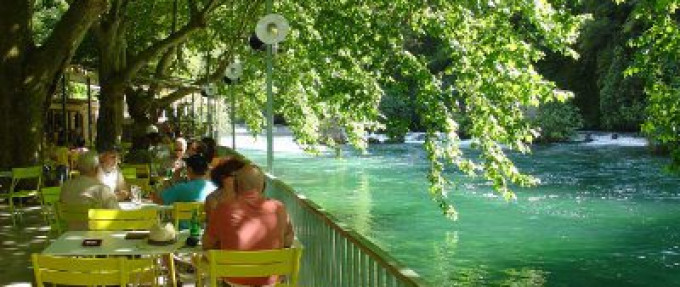
Fontaine de Vaucluse – the secret!
Considering that we had been travelling to Provence for so many years, I couldn’t believe that we had never visited Fontaine de Vaucluse! Particularly since it is soooo close to Isle sur la Sorgue, which we never miss on each visit… And double-especially, since a Belgian couple highly recommended it after spending a whole day there. They were also guests at Mas Pichony (where we stayed a number of times in the days BMdeP – Before we purchased Maison des Pelerins).
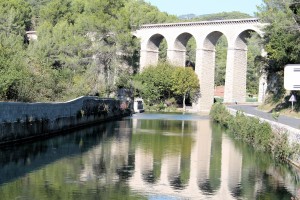
An elegant bridge carries vehicles on the D25, across the Sorgue as it flows from Fontaine de Vaucluse
As we drove into the village, it was clear why so many people speak so highly of it – after about a 10 km ride along the D25 through pretty farmland and orchards, until you cross the Sorgue River upstream and enter the deep valley where kayaking and canoeing is a popular activity.
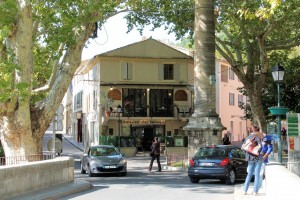
The Town Square is shaded by towering Plane trees and surrounded by interesting shops, restaurants and the Santon Museum
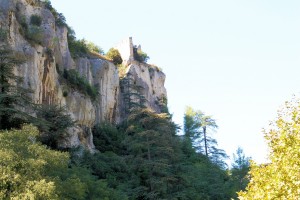
As you walk along the banks of the river towards the source, you see the towering cliffs at the end of the valley, and the Archbishop’s Palace from varying angles – sometimes straight up towering cliffs, sometimes dotted with caves and sometimes covered by large trees.
An 800 meter walkway on the banks of the river allows visitors to walk all the way, past smaller springs and waterfalls all the way to “the source”.
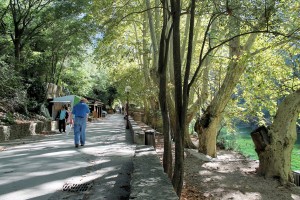
Along the river bank – tall trees shade visitors and stall holders who offer a variety of souvenirs and refreshments
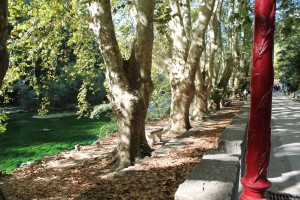
Peace and serenity along this stretch of the river where you often see visitors sitting down and just taking it all in
October was a very pleasant time to visit – the weather was sunny and warm, but we were there at the end of “the secheresse” a very dry summer, and while the smaller springs were still gushing, the main “source” was not flowing, which gave us a wonderful opportunity to gauge the enormous opening in the cliffs where I can only imagine what it must look like on a day when up to 1.8 million cubic meters gushes through! On the way, up there we passed a number of people enjoying the beautiful surroundings while fishing or simply sitting on one of the benches pondering this amazing and slightly mysterious place where so much water just comes gushing out of the ground.
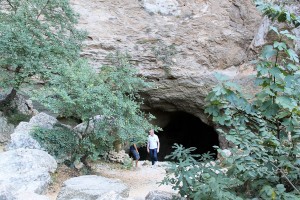
“The Source” – during the Spring and early Summer this large cave (Spring) in the rock gushes millions of cubic meters of water pushing it out all the way along the river
I guess they and we were not the first people to have been taken by the beauty and mystery of this closed valley – as far back as 1337, Francesco Petrarch – Italian Priest turned Poet settled in Fontaine de Vaucluse close to his good friend Philippe de Cabassolle, Bishop of Cavaillon whose Medieval Palace is perched high on the cliff overlooking the village.
The ruins of this Palace can still be seen from the village and if you like hiking, you can walk up there.
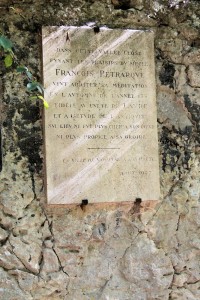
Along the River walk, this Plaque pays tribute to Petrarch (notice that his name in French is Francois Petrarque)
Petrarch who, with his family, came to Avignon (when he was young), following the Papal Court of Clement V during the Avignon Papacy, left the priesthood after laying eyes on a woman who is known as “Laura” and who became the subject of many of his writings – even though they had no contact. It is said that Laura was a married woman.
Much of his work was done in Fontaine de Vaucluse which he found to be an inspiring place. As far back as the 16th Century, many literary scholars and well known personalities visited this village to pay tribute to Petrarch – so it has been a well visited site for a very long time.
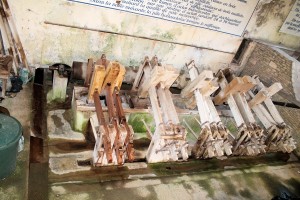
Heavy wooden mallets worked the wood chips or other source materials into a pulp – the first stage in producing paper
Today, visitors to Fontaine can take a walk back in time through the lovely Old Paper Mill and see just what went into the early production of paper in the early days of industrialism, as well as buying some of the fare of this mill.
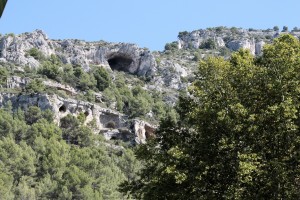
Small and large caves in the cliffs above the town made an ideal place for the Resistance fighters to take shelter
As time passed on and World War II brought occupation and great hardship to the citizens of France. Its location at the base of a steep cliff, made Fontaine an ideal spot for the operations of the local Resistance, known as the Maquis – where hiding in the inhospitable cliffs above the village made it less than likely that they would be discovered. It’s difficult to comprehend the impact of the occupation on the lives of villagers (right throughout France), but we do get a glimpse into what their world was like.
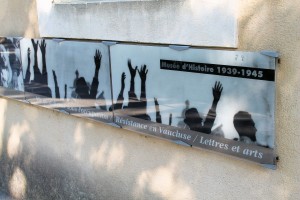
The Musee d’Histoire tells the story of another time when life was not so easy for the inhabitants of this area
The Musée d’Histoire, which occupies one of the old Paper Mills was opened in 1990 – and is dedicated to the what they called “the Dark Years” of occupation – after the humiliation of defeat when the Resistance Movement became active. I have just finished reading “The Citadel” by Kate Mosse which dealt with the same subject matter, although it was set in the Languedoc – an excellent book that reminds us that not so long ago, these villages and towns underwent and withstood extremely harsh times.
Just these three aspects of a very old town at the end of a closed valley in Provence are enough to stir interest and make you ponder Fontaine and its mysterious past – but there is a lot more to see and do here ..
… kayaking and canoeing, a santon museum, great hiking and rock climbing, lots of wonderful picnic spots, the Petrarch Museum, a 12th Century Romanesque church…but if you are just looking for some quiet time..


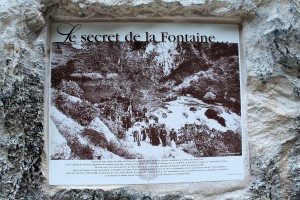
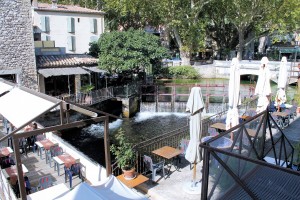
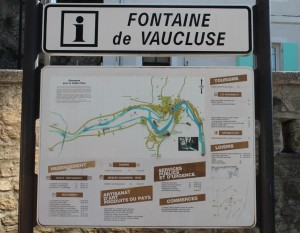
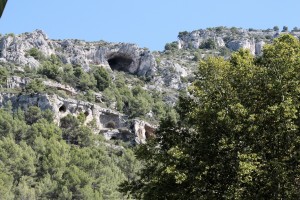
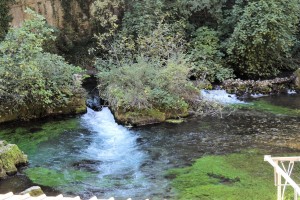
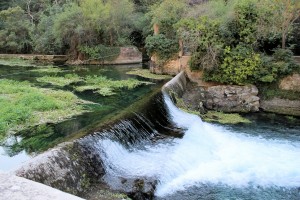
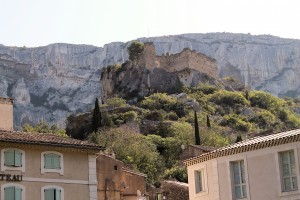
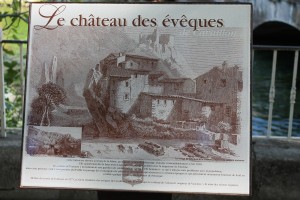
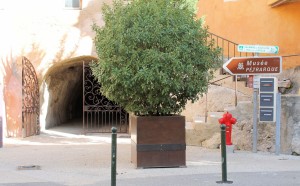
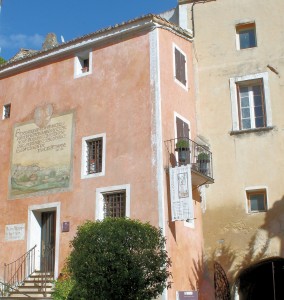
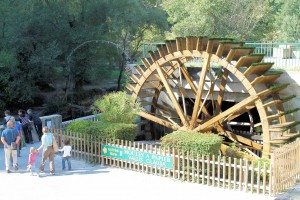
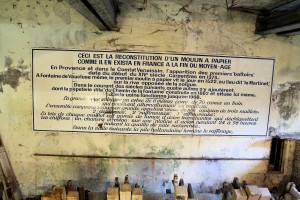
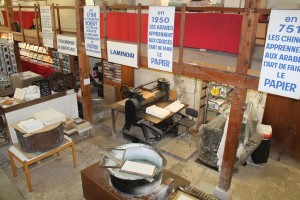
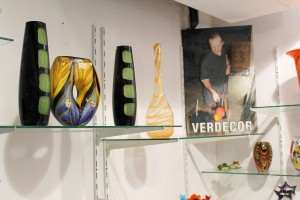
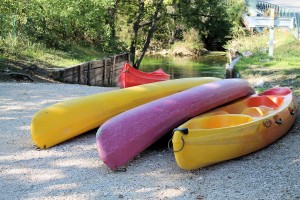
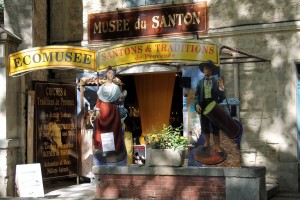
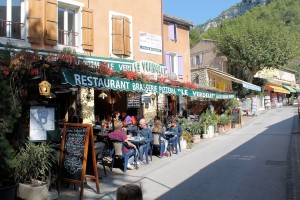
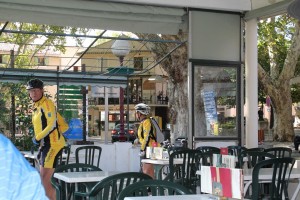
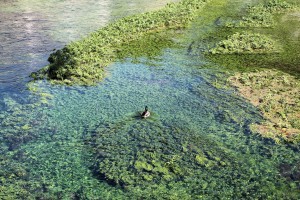
Very nice article and photos! Although we are from the USA, we have visited Fontaine de Vaucluse several times, at different seasons, because our daughter and her family live in Avignon. Each visit to Fontaine de Vaucluse is different and memorable. Thank you and Best Wishes!